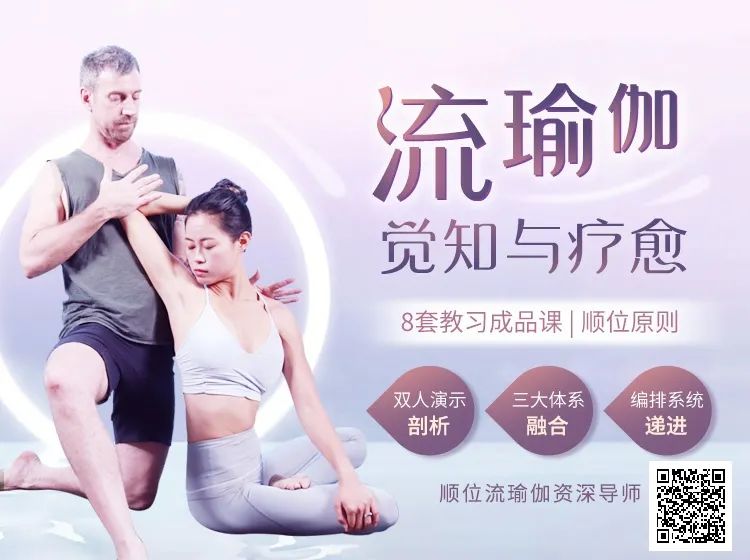Click “Ashtanga Yoga road” above to subscribe! As for Ashtanga Yoga practice, when a slightly interested practitioner consults wechat group or various yoga teachers and yoga friends, he often hears some untrue words about this practice; For example: many people are injured, which is not suitable for girls.

They are too rigid.

They will thicken their arms (neck and back), and the trapezius muscle will thicken more and more.

They will hurt their wrists.
If they hurt this and that, they will practice too thin and dry.
They don’t practice like girls.
They go crazy and are not suitable for you Wait, wait.
In fact, it’s really normal.
As a practitioner of Ashtanga Yoga for nearly ten years, I don’t feel anything abnormal about these comments, and of course I won’t feel righteous.
First of all, the people who say these words are not necessarily those who practice Ashtanga Yoga for a long time, so they have no in-depth understanding of this practice method; Secondly, any practice system is a knowledge system, but no knowledge system is complete and perfect.
Today, with the increasing popularity of Ashtanga Yoga, the group of practitioners is growing day by day, and senior practitioners who benefit from long-term practice share a lot of their own positive experiences on social media.
However, as novice practitioners, after seeing these magical insights, they expect this system to be a magical system.
If they only see all kinds of auras, It’s easy to use this kind of practice to interpret the connotation of absurdity.
The value of Ashtanga Yoga comes from long-term and continuous practice.
Only through the precipitation of time and contained in Ashtanga Yoga, the core value of Hatha Yoga can be realized by practitioners: Breathing / contraction; Alignment of body position, gaze point and peace of mind Because Ashtanga Yoga is a very excellent form of practice in Hatha Yoga system, its benefits of body and mind have been realized by thousands of practitioners.
Hatha Yoga originates from a classical inheritance, but its basic physical skills can not be learned and mastered so easily.
Ashtanga Yoga is brought in by the trinity of breath, posture and gaze, but it requires a lot of energy and vitality from the practitioner in a period of time; We often hear the saying that “lazy people can’t practice Ashtanga Yoga” means that.
No matter how good the substitution path is, it also requires a lot of energy from the practitioner’s body to go deep and even on the road.
In fact, any kind of practice or spiritual practice needs to be better than going to the gym, taking a few comfortable “Yoga” classes or listening to a few “mindfulness” More lectures require much more energy and time.
The same is true of Ashtanga Yoga.
The romantic path without breeze and drizzle allows you to stroll comfortably into the Peach Blossom Land.
An exerciser needs to pay a lot – not only in practice time, but also in the sacrifice of existing lifestyle, social and even career, so as to go further.
In this process, there will be many risks and uncertainties.
The exerciser needs to constantly break through himself, not only physically, but also in the face of various uncertainties and break through the brain, mind and emotion, And the soul.
In such a process, of course, many people will “taste” astonga Yoga for the first time with a lot of romantic ideas, but they can only taste it.
They can spread excuses all the way in the process of retreat, and they can pour out a jar of “acid” when discussing the “system” of astonga with others in the future.
Even after going deep into the field of Ashtanga Yoga, an practitioner may get lost in the surface of practice techniques – how to unlock, how to advance, more and more postures, more and more difficult postures The real purpose of Ashtanga Yoga is to let practitioners enter the deep dimension rather than pursue linear progress in the plane dimension; The real purpose of practice is to cultivate the power of the mind.
Only by practicing the concentration of attention and the calm of the brain can we feel the energy level of the body, and at this time the essence of Hatha Yoga can be presented – the body in the body can become a shrine for meditation.
Ashtanga Yoga is not the difficult posture of those “dominant body” practitioners or the appearance of walking through the handstand; It’s a lifelong exercise – and something that requires lifelong learning is always daunting.
For example, pataby Joyce always lets the practitioner breathe freely during practice; If you take this freedom of free breathing as the verb of the imperative sentence, you will be surprised to find that most practitioners do exactly the opposite breathing – most of the breathing we hear is so “not free”, so tight, so much pressure – free breathing is an option, You can choose not to force breathing, but you need to accept the posture and the current state of your body.
This is a mentality that many people need probably ten years + to achieve.
If you can breathe your Ashtanga Yoga freely, you can learn to breathe your life freely, and your life will be fundamentally changed due to the practice of Hatha Yoga; How can an practitioner not fall in love with this practice when he / she practices Ashtanga Yoga and realizes the “samadhi” of free breathing, body position, energy flow and staring at the mind? On the contrary, if the practitioner deviates from the above-mentioned “samadhi” and focuses on what he can’t do, such difficult postures, or the evaluation of practice progress, or even comparison with others, he will always be disappointed with his own linear progress one day..

